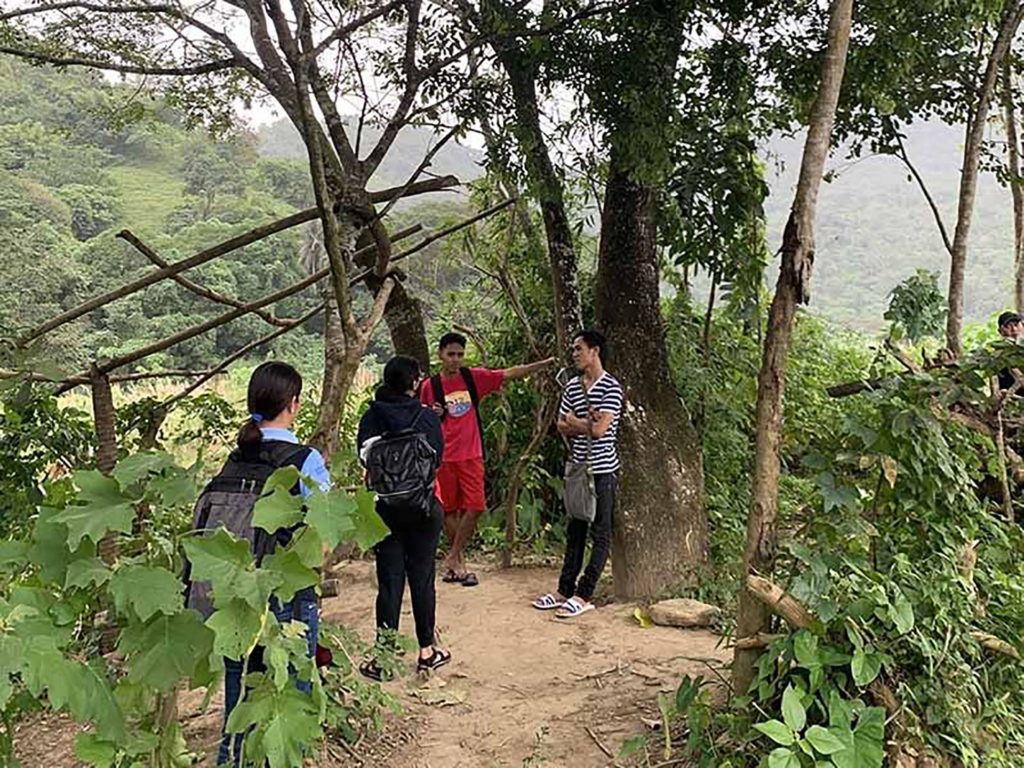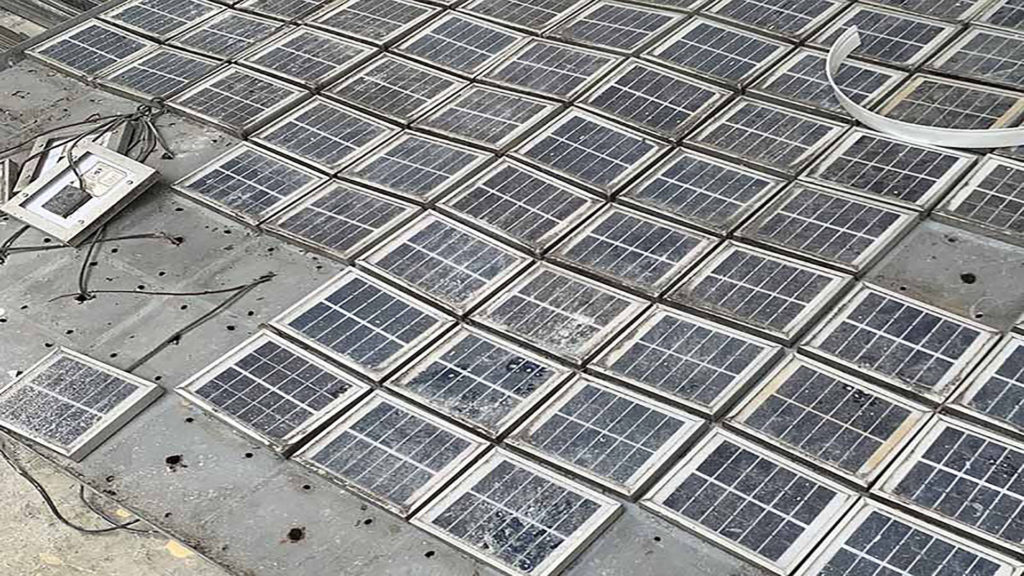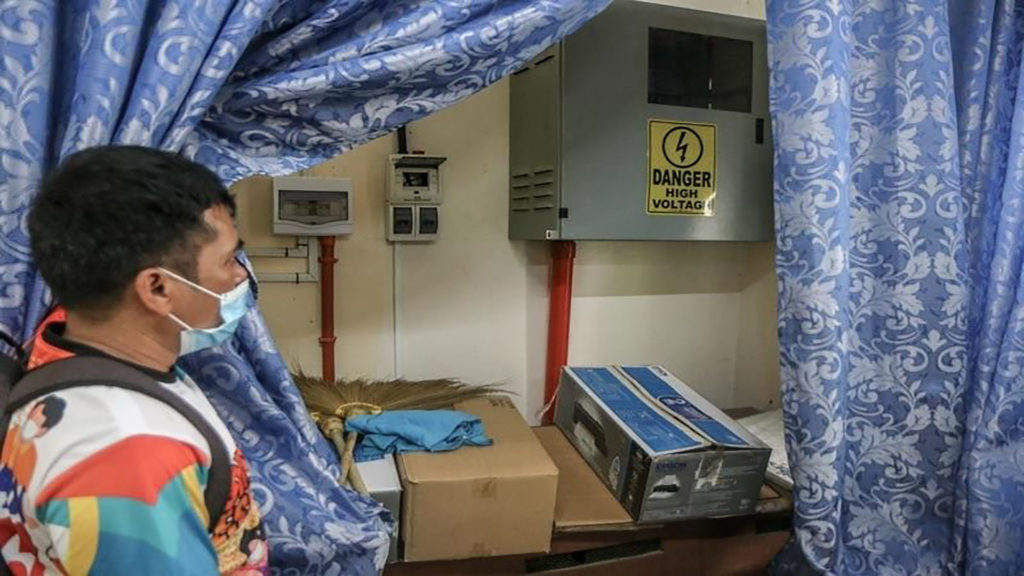RIZAL, Philippines — Barangay Laiban in Tanay, Rizal is just 30 minutes away from the town’s main road, but the settlement of around 700 people has been left behind not only in electrification but also in education.

Students in the village rely on gasoline lamps so they could study and do their homework come nightfall. Before the pandemic shuttered schools, educators like Maria Cristina San Pablo used chalkboards and Manila paper, while thousands of teachers across the archipelago utilized televisions and laptops inside classrooms.
The situation puts learners in an even more disadvantaged position as the world becomes increasingly digital.
The Department of Education announced in late January that it has entered a deal for more than 1,000 public schools to have annual access to applications under the Adobe Creative Cloud.
“We are now in the creative development era. Anyone can be a content creator due to the simplification and adaptability of existing mobile devices where learning and design can blend as one,” Education Undersecretary Alain del Pascua said in the department announcement.
Anyone, that is, except for people in places like Laiban that do not have access to power or mobile coverage to go online.
According to San Pablo, students of Laiban Integrated School (LIS) performed poorly in the recent National Achievement Tests, which gauge the academic levels of Filipino students.
One of the reasons for the students’ academic performance was the “[lack of] access to electricity and access to technology,” she said.
Such lack of access also made it difficult for students to pursue college educations or find jobs.
“A graduate of our school who took a college entrance exam told us they struggled in the test because they could not answer simple questions about the parts of a computer. It broke our heart hearing the struggles of our students,” San Pablo said.

Powering a school
In the Philippines, 1,635 primary and secondary schools have yet to be connected to power grids, according to the DepEd. The agency has a solar and electrification program and is aiming to complete solar panel installation and electrical system updates in schools in disadvantaged areas by 2023.
Believing that electricity access can play an important role in improving learning outcomes, a group of young individuals came together to energize off-grid schools through the use of clean energy.
They launched Project Araw-Aral, which aims to build solar-powered co-studying spaces in unelectrified communities in the country, starting with Barangay Laiban.
Jemar Maldia, an electrical engineer and the lead of Project Araw-Aral, knew the difficulty of growing up in an unelectrified household so he wanted to help students who have no access to electricity.
“Everyone deserves to have access to quality education. It is challenging if students do not have access to electricity, especially in this information age where almost everything is tied to computer literacy and the internet. Students without access to electricity that can power access to technology will be left behind. Laiban is proof of that,” Maldia said.
In March 2021, the team installed 14 solar panels on the roof of a classroom in LIS. These panels can be used to power computers and other appliances in the school.
The co-studying space was designed to be a classroom where teachers can cultivate the information and computer technology (ICT) skills of students. After school hours, students can use the space to finish their homework and do their research.
Currently, the co-studying space is not being fully utilized as students in Laiban—like millions of young people in the Philippines—are learning remotely due to the COVID-19 pandemic. But for teachers like San Pablo, the initiative is already a big help.
Because the ICT room is now electrified, learners in the virus-free village go to school, although not regularly, to familiarize themselves with computer applications such as Microsoft Word.
Through solar power, teachers are able to print self-learning modules that are distributed for students to read.
The school also serves as a communal charging station for residents. The small fees collected from people will be used by the school for the maintenance of solar power installations.
“Project Araw Aral as an initiative advocating for equal access to quality education through renewable energy highlights the key role of clean energy not just in solving community problems but also in ensuring that such solutions do not harm the environment,” Maldia said.
“By utilizing solar energy, we get to displace the carbon footprints which will be emitted by using other sources such as diesel, while providing platforms for the students of the community to have quality education,” he added.
The town government has a monthly fuel allocation for the school’s generators but teachers said they avoid using them because of the pollution and because the generators themselves are underpowered, making them likely to break down if used too often and for too long.

Community ownership
Barangay Laiban is no stranger to renewable energy initiatives of non-profits and the local government. University students have also visited the village to test solar power projects for their classes.
Several projects introduced to the community failed, with devices breaking down or forgotten by implementers.
Maldia stressed that the engagement of the community is an important factor in effectively implementing renewable energy projects. Locals were trained to operate and maintain the devices.
“For this type of project to become successful, the community has to become a part of this project. The community has to own the project,” he said.
In October, Project Araw-Aral’s partner organization Solar Hope distributed solar home kits to over a hundred households in Laiban to complement the current solar learning facility.
Aside from electrification, teachers and parents are also hoping the remote community will have adequate internet connectivity so students can access quality digital learning.
The shift to virtual classes and self-learning modules has proven extremely challenging for schoolchildren in the village.
To go online, students have to go to the riverside — to an area they call “signalan”, or “the place where we can get mobile signal” — where they have built huts to shield them from the sun and the rain while studying.
Having an internet connection in the school or at home will ease the worries of parents, said Rhodora Peralta, a mother of three children.
“The area is not safe especially when it is raining. When the weather is hot, students will study under an umbrella. It is really pitiful. The students have to endure that just to learn,” she said.
Laiban is known as a destination for trekkers, who explore nearby mountains and waterfalls, although movement restrictions brought by the pandemic have slowed tourism to the village.
Many of the people in the village have small stores and food stalls, village chairperson Aurelio Gacosta, who still uses a typewriter for barangay documents, said. Others work in construction and in farming, while others have joined the military.
The village chairman struggles to recall the last time someone from Laiban graduated from college, before blurting out the name of a teacher at the local school.

‘Electrification too expensive’
It is unlikely that Laiban will be connected to the power grid anytime soon, Gacosta said.
“There are no houses on the way here,” he explained. Although Laiban is a short distance from the main highway, the trip is down a dirt road and across several streams.
It would not be cost-effective for power distributor Meralco to put up power lines to the small village although that may change in a few years as more developers put up resorts and rest houses along the mountain slope leading down to Laiban.
In the meantime, Laiban makes do with solar street lights donated by civic groups or put up by the Tanay government. Gacosta gestures at several along the village’s main road: “These were donated by a group of Masons but the posts are from an earlier donation of solar lights.”
Another post outside the barangay hall was put up by university students. The students have yet to return to Laiban and the light no longer works.
“We accept the help, especially since there is not a lot we can do to get electricity to the houses,” he said. The street lights, he said, at least make it safer to walk around at night.
Before donors brought solar lights to the barangay in 2015, the village relied on a diesel generator that ran from 6 p.m. to 9 p.m. Residents used to pay P15 a night for power, which reached most of the houses in the barangay power.
“Pero natuyuan ng langis, nasira (But it ran out of oil and stopped running),” he said.
Many of the village homes have their own solar panels, although many can only produce enough power to keep one light on at home. “That is enough for students working on their school modules,” he said.
San Pablo, who is from Laiban and whose children study at the local school, said that solar power is still expensive at around P24,000 for a basic set.
Solar rooftops that produce more power than that can cost from P90,000 to P365,000, according to prices advertised online.
She said that government subsidies to defray the costs of installing a solar power system would be a great help.
“For now, we have to limit our use of lights and gadgets and our TV,” San Pablo said, saying that she chooses to see a silver lining in their situation. “At least my children are not always on their gadgets.”
But, as a teacher, she acknowledged that “we really are at a disadvantage because of limited access to technology and to mobile phone signal.”
Gacosta said a team from Meralco had already visited the village to survey the site for a “solar houses scheme” and to give people forms to fill out to apply for the service.
On its website, Meralco said it has been working to find ways to bring power to isolated communities on Isla Verde in Batangas and on Cagbalete island in Quezon, both in the same administrative region as Rizal province.
The pandemic may have slowed deployment of the microgrids to Laiban, however, with Gacosta saying it had been more than a year since they sent in their application forms.

Power policy shift
Nearly 60% of the country’s generated power comes from coal. Last year, the Philippines banned the construction of new coal-power plants but it will need a decade or so before it could kick its coal dependency.
The government is eyeing renewable energy such as solar to account for 35% of the power generation mix by 2030, and supply half of the country’s needs by 2040.
To help attract investors to the renewable energy space, the Renewable Energy Act offers incentives like income-tax holidays and duty-free importation of machinery and equipment.
The Department of Energy reported last November, however, that the share of renewable energy in the power generation mix has gone down to 21% from 34% in 2008.
DOE Director Mylene Capongcol, OIC of the department’s Renewable Energy Management Bureau, is quoted in a Philippine News Agency article that month as saying “there are still a lot of improvements, a lot of new policies…that will support renewable energy development.”
As with any project, however, progress can only be achieved through community consultation and with the cooperation of local governments.
In a 2019 paper for the Energy Evaluation Asia Pacific Conference, Margery Bautista of De La Salle University, looked into the Rizal Wind Farm in Pilillia — a town up the road from Tanay — which, she said, “can serve as a model for replication for RE projects.”
“[T]he key success factors are local engagement and local government support, active private sector participation and institutionalization of national policy and policy integration at the local level,” Bautista said, noting that the town also benefited from the project through employment and from tourism.
Gacosta remembers resistance to the Laiban Dam, which would have been constructed in the village and was feared to inundate 28,000 hectares of land, and of similar resistance to the proposed Kaliwa Dam.
“What we said then is that we understand that Manila needs water, but helping Manila live would mean killing our community,” he said.
But he is more open to projects that will bring power to the village, saying he had been in exploratory meetings on proposals for a wind farm in Laiban. He even offered a suggestion of putting up a solar power farm near where the Laiban Integrated School stands to bring electricity to people’s homes.
Places cut off from urban centers and that have been left behind by lack of access to something as basic as electricity may yet be the areas where the next phase of power generation in the Philippines can take root. — with Jonathan de Santos

This article is originally written by Gaea Katreena Cabico for Philippine Star on 11 February 2022. https://www.philstar.com/headlines/2022/02/11/2160164/solar-power-offers-students-unelectrified-laiban-chance-catch-up